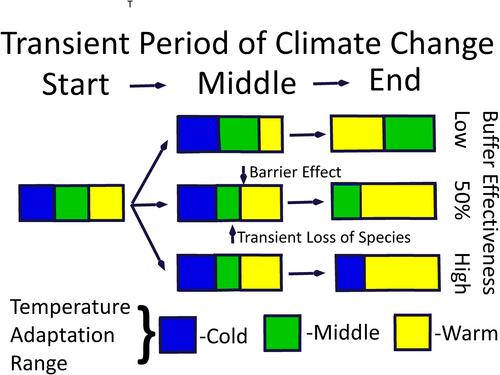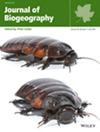Species richness responds to buffer effectiveness and competitive priorities in simulations of alpine microrefugia
Abstract
Aim
Microrefugia on alpine slopes may allow species to persist in a warming climate. How plant species richness could respond to of the effectiveness of climatic buffering, defined as the difference in climate change in a microrefugium in comparison to that of an open alpine slope as mediated by competitive priority effects, is explored.
Location
Alpine habitat anywhere.
Taxon
Vascular plants.
Methods
A simple spatially explicit model of plant species with adaptations across a climatic gradient simulates reproduction, dispersal, and mortality through climatic change. The effectiveness of microrefugia in buffering climate change and levels of competitive priority effects are included as factors that alter demographic rates in an experimental framework. Spatial patterns of microrefugia and differences in dispersal are also simulated. Differences in mean species richness were analysed.
Results
The number of species conserved, relative to an instantaneous equilibrium calculation with the same climatic change, decreases with inclusion of a period of change (transient vs. instantaneous, equilibrium change) and further with competitive priority effects. In these simulations, the number of species conserved does not simply increase with buffer effectiveness, as hypothesized, but instead is bimodal.
Main Conclusions
The dip in number of species conserved in the middle range of buffer effectiveness occurs because barriers develop. These are temporal ecological traps, wherein species adapted to the middle of a climatic gradient become extinct, because their colonization of microrefugia is blocked by an extinction debt of resident species. The inertia that allows these demographic consequences is increased by competitive priorities. The highest levels of buffering and resulting inertia will not be ubiquitous but the bimodal pattern indicates that assessments of the role of microrefugia need to recognize the temporal species-environment and species-species interactions that will change the number of species conserved versus extinctions.


 求助内容:
求助内容: 应助结果提醒方式:
应助结果提醒方式:


